Exhibitions
2024
“Arboretum at SCAD” - Savannah, Georgia, USA “Arboretum – Ebb & Flow” - Nature Morte, Mumbai2023
“Prussian Blue – Aftermath” - KNMA, Noida “Arboretum” - Nature Morte, Dhanmill, New Delhi2022
“Kochi-Muziris Biennale” - Kochi, Kerala “Pop South Asia” - Sharjah, United Arab Emirates “The Game Play – Weeping Farm + NetZero 2030” - New Delhi “Bread Winner @ 5th Biennial Contemporary Art” - Mardin, Turkey2021
“Verbal Kabaddi VII” – Waltham Forest Council - Waltham Forest Council “Conjecture” - Nature Morte, New Delhi “Farmer is a Wrestler, Lexicon of Distress” - Art at a Time Like This2020
“Kisan Mukti March” - After Hope, Asian Art Museum “Alchemist(s)” - Pearl Lam Galleries, Hong Kong “How to reappear: Through the quivering leaves of independent publishing” - MMAG Foundation for Art & Culture, Jordan
“How to Maneuver: Shape-shifting texts and other publishing tactics” - Warehouse421, Abu Dhabi “The Sundry Effect” - Bikaner House, New Delhi2019
“Bread, Circuses and I” - Nature Morte, New Delhi “Table Manners” - Palace of Independence, Astana, Kazakhstan “Lullament²” - Ludwigsburg Kunstverein, Germany “Match Fixed/ Fixed Match” - Le Tripostal, Lille, France “Double Bounce” - Pearl Lam Galleries, Singapore “Bread, Circuses & TBD” - Yorkshire Sculpture Park, United Kingdom “Farmer is a Wrestler” - Punjab Lalit Kala Akademi, Chandigarh “Lullaments” - Stir Gallery, New Delhi2018
“Collection Bureau” - IAF, New Delhi “Breaking Ground” - India Ceramics Triennale, Jawahar Kala Jendra, Jaipur “Somnium Seminibus II” - DIP Contemporary Art, Switzerland “Escape: ‘A playground of ephemerality’-Vision Exchange” - Art Gallery of Alberta, Canada “The Sculpture Park” - at Madhavendra Palace, Nahargarh Fort, Jaipur - Nature Morte2017
“Set Point_Laughing in the Vernacular” NGMA - Sakshi Gallery – Mumbai “Play, Pray” - Bikaner House, New Delhi “Bread, Circuses & You” - Art Fair, Dubai “Bread, Circuses & Wifi” - Pearl Lam Gallery, Hong Kong2016
“Walk of Life” - Level 01 - Khoj International Artists Association, Delhi
(Water) - Climate Control, The Manchester Museum, Manchester
Fed @ KCAD Galleries, Michigan “Memoir Bar” - Chatterjee & Lal, Mumbai
ABWAB - The Emotional Pavilion - Dubai Design Week, Dubai
FICA/IAF, New Delhi2015
“Walk of Life” - Of Games Residencies III - Khoj International Artists Association,
New Delhi “Games People Play” - Bhau Daji Lad Museum, Mumbai “Q : The Lighthouse” - Nature Morte, New Delhi2014
“Sparsha” - Touching the Senses, Ritual and Contemporary Indian Art”- Kunstmuseum,
Bochum2013
“Longing for Tomorrow II” - Meissen Porcelain, Residence of the German Ambassador to India, New Delhi “Q” - Famous Studios, Nature Morte, Mumbai “Windows of Opportunity” - Art Plural, Singapore2012
“Longing for Tomorrow” - Nature Morte, Berlin
“Nosturistic” - Hilger Contemporary, Vienna “Escape” - India Today Arken Museum of Modern Art, Denmark2011
“The Beautiful Game” - Thukral & Tagra Foundation - Project Booth, Art Summit,
New Delhi “Put It On, Again!” - Nature Morte, New Delhi “Escaped!… While I Was Cooking?” – Samtidigt (Concurrent) - Helsinki Art Museum, Finland
“Maximum India” - Kennedy Center, Washington DC “Indian Highway IV” - Lyon Museum of Contemporary Art, France “Paris Delhi Bombay” - Centre Georges Pompidou, Paris “Indian Highway” - Maxxi Museum, Rome “Future Pass” - Venice Biennale and Wereld Museum, Rotterdam “Science Mystery Magic” - BTAP Gallery and Tokyo Art Fair, Tokyo “Asianart: Sustain” - Nature Morte, Berlin “The Matter Within” - Yerba Buena Center for the Arts, San Francisco “German Return” - Nature Morte, Gurgaon2010
“Bosedk Project” - Richmond Art Gallery, Vancouver “Low-Tech Family Vacations” - Singapore Tyler Print Institute, Singapore “Middle Class Dreams” - Arario Gallery, Seoul “Escaped!… While I Was Cooking?” – Samdigit - Gallery 5, Kulturhuset, Stockholm “Match Fixed/Fixed Match” - Ullens Center for Contemporary Art, Beijing “Inside India” - Palazzo Saluzzo di Paesana, Turin “Urban Manners 2” - SESC Pompie, Sao Paulo “PEHNO – Put it On” - Khoj-in-Context- Public Art.Ecology, New Delhi “Khoj-in-Context” - Public Art.Ecology, New Delhi2009
“Hi! I am INDIA” - Escape for the Dream Land - Asia Pacific Triennial of Contemporary Arts 06, Queensland Art Gallery, Brisbane “Escape for the Dream Land” - Asia Pacific Triennial of Contemporary Arts 06, Queensland Art Gallery, Brisbane “Chalo! India: A New Era of Indian Art” - National Museum of Contemporary Art, Seoul; Essl Museum, Vienna “Thukral & Tagra, 315 Sector 23, Opp Bosedk Mall” - Gallery Barry Keldoulis, Sydney “Nouveau Riche” - Nature Morte, Berlin2008
“Imaginery Realities” - Max Wigram Gallery, London “Make Art Stop AIDS” - UCLA Fowler Museum, Los Angeles “Chalo! India: A New Era of Indian Art” - Mori Art Museum, Tokyo “The Audience & the Eavesdropper” - Phillips de Pury, London and New York “Somnium Genero Cafe” - Tokyo Art Fair, Tokyo “Somnium Genero 02” - Gallery Barry Keldoulis, Sydney “New Improved Bosedk” - Chatterjee and Lal, Mumbai2007
“PINK” - Galerie Mirchandani + Steinruecke, Mumbai “New Delhi New Wave” - Marella Gallery, Milan “Animamix Biennial” - The Museum of Contemporary Art, Shanghai “Everyday Bosedk” - Nature Morte, New Delhi “Put it On” - Bose Pacia, New York “Adolescere-Domus” - Art Statements, Art Basel 38, Nature2006
“Global Edit 06” - Armani Casa, Wallpaper Magazine, Milan “Vector Classics” - Alliance Francaise, New Delhi “Vector Classics” - Jehangir Nicholson Gallery, NCPA, Mumbai2005
“Art which is around and behind” - Nature Morte, New Delhi
“Iconography” - Nature Morte, New Delhi2004
“Visual Dialogue” - Hype Gallery, London


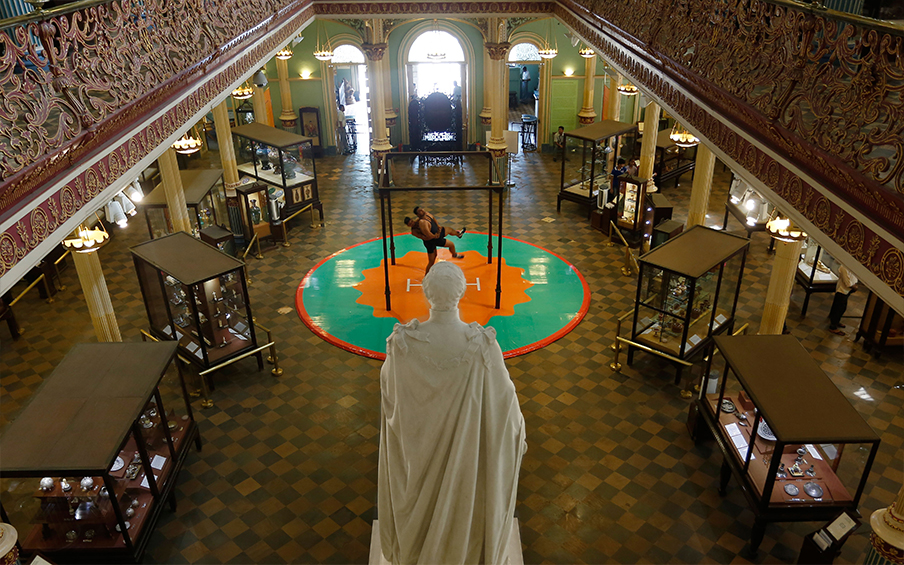
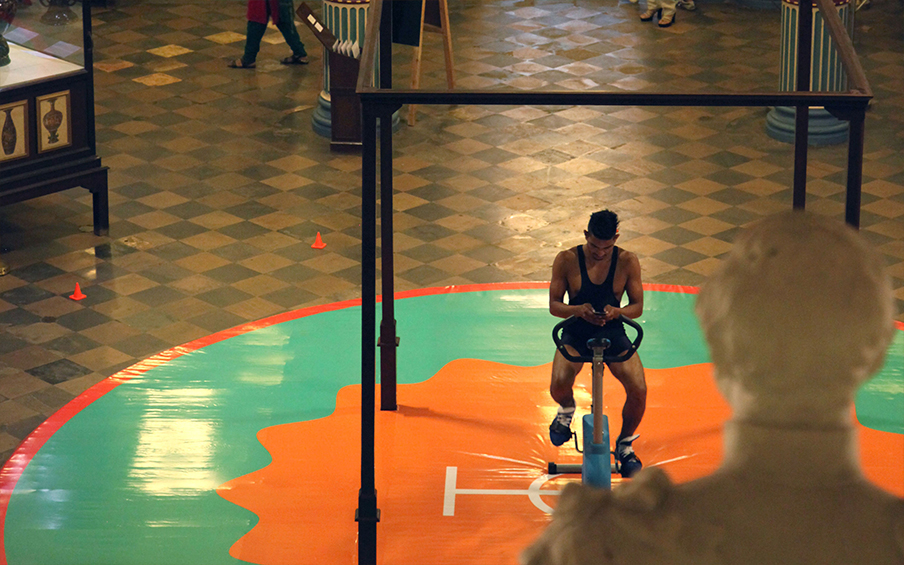

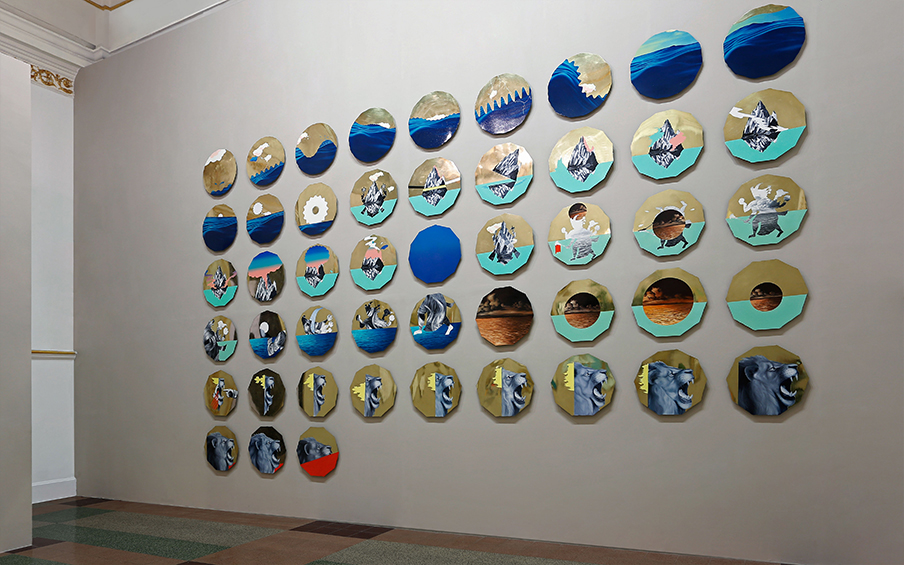
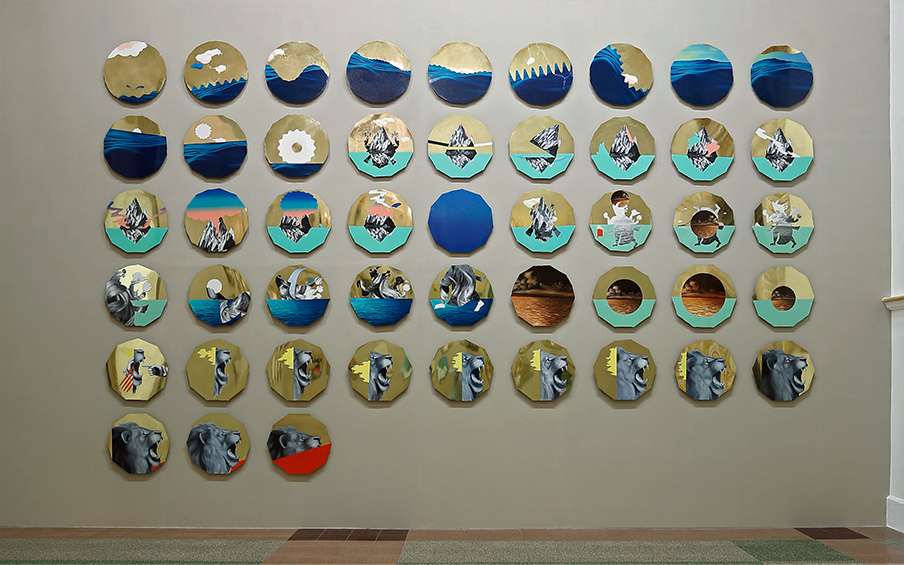

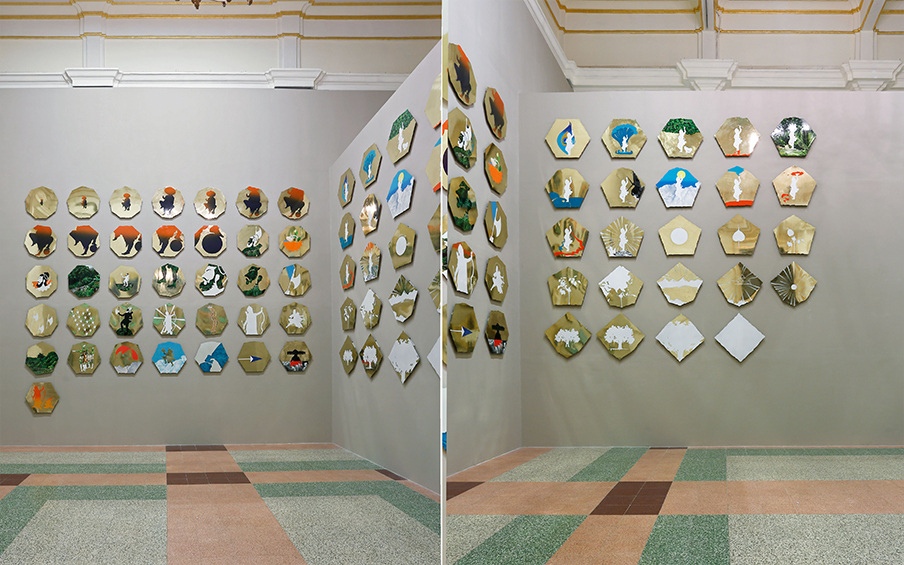
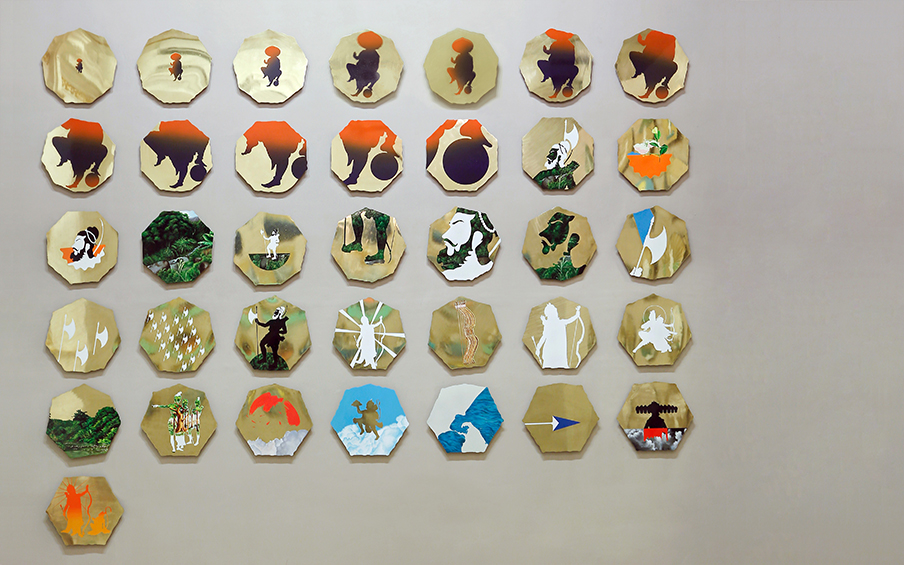

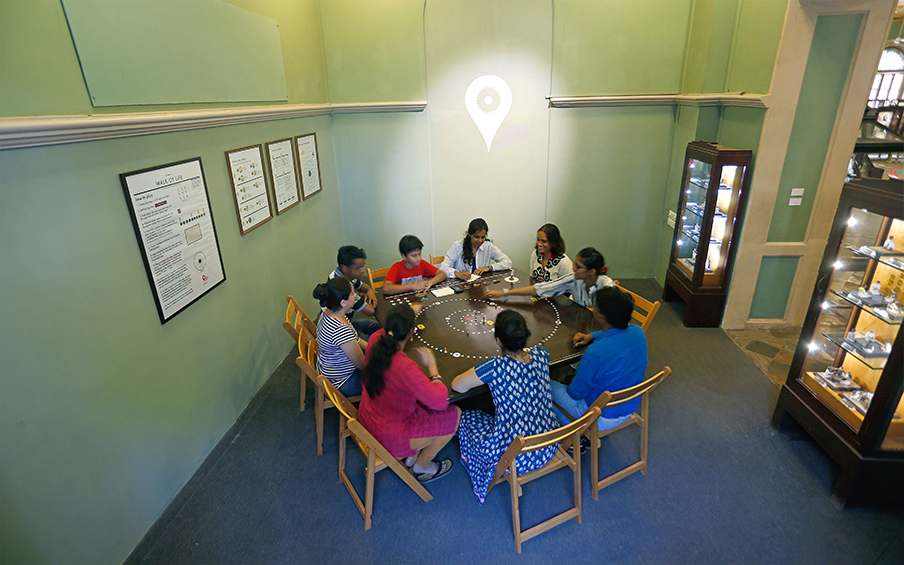
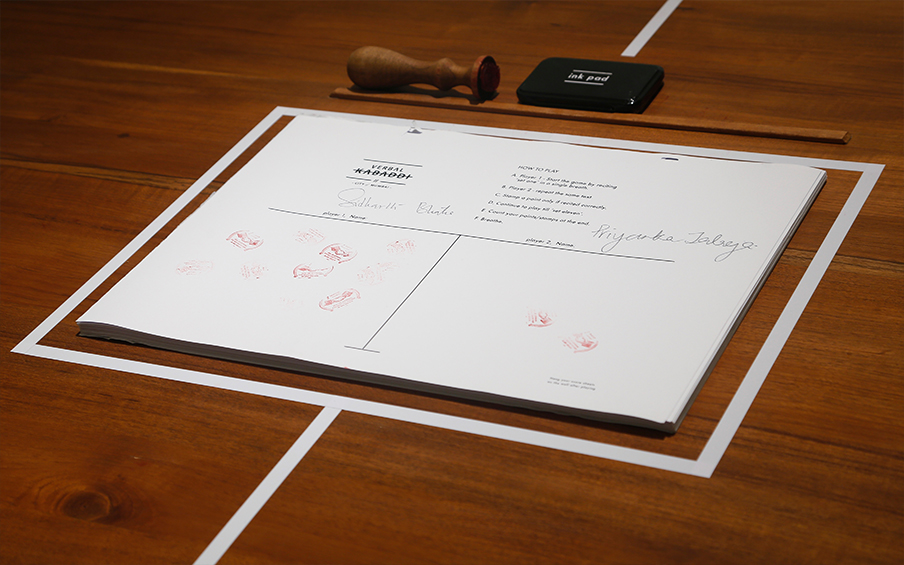
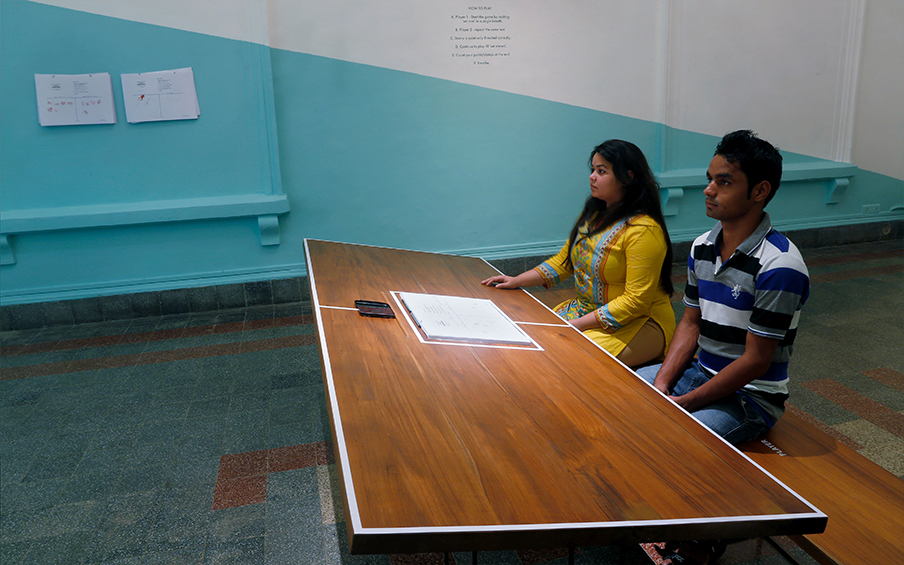


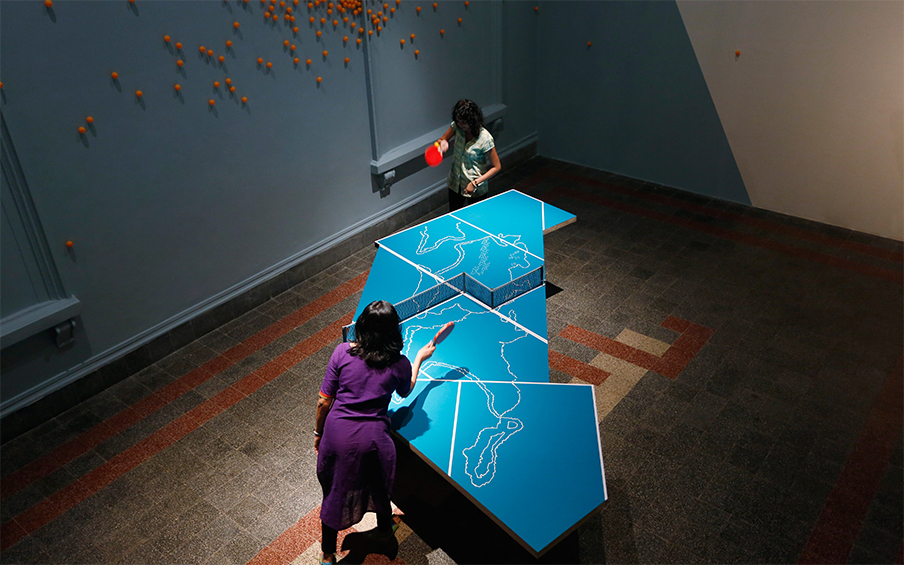



GAMES PEOPLE PLAY | 2015
Dr. Bhau Daji Lad Museum presents, Games People Play, an exhibition of new artworks by the
artist duo Thukral & Tagra. This show is part of the series of curated exhibitions titled ‘Engaging Traditions’. Artists are invited to respond to the Museum’s collection, history and archives, addressing issues that speak directly to the traditions and issues that underlie the founding of the Museum, yet evoke the present by challenging orthodoxies and questioning assumptions. Artist duo, Thukral & Tagra draw from the Museum’s collection of ancient and traditional games, exploring the idea of ‘play’ from cultural, strategic, physical and psychological perspectives. They envision the Museum as a gaming arena, where games are categorized into the physical, mental and spiritual, spanning the past, present and future. The artists have reinvented these games to create experiences that are both playful and serious. The viewer is challenged to think about life’s many aspects as a game of chance and to reflect on the nature of their participation in both life and art. The work explores tradition through a contemporary sensibility.
The exhibition of new works by the artistic duo Thukral & Tagra responds to the museum’s collection and space, exploring the idea of “play” from cultural, strategic, physical, and psychological perspectives, with the title “Games People Play.”
The artists interpret “life” from various perspectives, exploring the significance of different types of games, both formal and casual, reinventing them to create experiences via a competitive environment that often involves the viewer and causes him or her to reflect on the nature of their participation in both life and art.
The artists will envision the museum as a gaming arena or stadium, where the games are categorized into the physical, mental and spiritual, spanning the past, present and future.
With these, Thukral & Tagra continue their exploration of the relationship between art and play by reinventing rules and creating environments away from the usual art practice of making paintings and sculptures. Specifically, the artists have conceived five new works with which the visitor to the museum is invited to participate:
1. The Walk of Life
The game is built upon the ancient Indian game called Ganjifa, Originally played with a set of 120 cards, the artists have turned it into a board game that depicts Dushavatar, the ten earthly incarnations of the Hindu god Vishnu. The avatars can also be considered as the evolution of mankind: from fish, to reptile, to mammal, to human, to deity. The game aims to impart the meaning of life to those who play it, in effect by paying off one’s ‘debts’ and equalizing one’s ‘scores,’ which are recorded on the card of Karma.
The artists have used the original sets of Ganjifa cards found within the museum’s collection as the inspiration for a series of new paintings which will be displayed in the first floor galleries. Elaborating each of the ten avatars into 12 paintings of abstract symbologies, a total of 120 paintings on shaped brass plaques narrate the evolution of life.
2. Verbal Kabaddi (City of Mumbai version)
The idea is to create a participatory work which is meditative, challenging, and cerebral. The artists create a verbal version of kabaddi, setting it in an indoor environment, replacing the physicality of wrestling bodies with tongue-twisting texts to be read in a single breath.
While maintaining the sanctity of the ancient game by combining physical and mental strengths, the participants recount the history of the city of Mumbai, each player competing with his opponent by reciting the given sets of texts. A demanding sport of endurance is transformed into an exercise in concrete poetry, agility and perseverance still being essential.
3. The Vitrine
The open space at the center of the ground floor of the museum is transformed into a performance arena. The artists insert “real life” into the museum’s collections by erecting a life-size vitrine in which various activities and competitions will be staged throughout the course of the exhibition. With the simple thought of bringing action and movement into the static space of the museum displays, a series of exercises that combine the physical and the mental will be performed within The Vitrine:
Musical Chairs / Wrestling
Cycling / Text Messaging
Weight Lifting / Reciting Poetry
Trampoline Jumping / Reading a Newspaper
Skipping Rope / Singing
The exercises will be performed by both museum volunteers and visitors, furthering destabilizing the divide between employees and viewers, objects housed by the museum and the subjects who are viewing them.
4. The Game of Table Tennis
The British ruled the game of table tennis, invented as an indoor version of lawn tennis. A parlor game which became popular in the18th Century, it is still played in schools around the world and is an Olympic sport. The artists re-design the game so as to be more appropriate for our contemporary times and contemporary dilemmas.
The game is a constant flux of strategies and tactics between the opponents who strike an uneasy balance of skill, knowledge and energy. Utilizing history, the original map of Bombay’s seven islands is re-calibrated to become the shape of the table, reminding us how both the land and the people of India were adapted to fit into the British version of rules and by-laws of many different types of games.
5. The Stone Wings
One of man’s most primordial dreams is that of flight. The artists have created a giant pair of wings that can be worn by anyone, anyone who steps in between them to have their portrait shot, sculpture rendered as photo-opportunity in the age of the Selfie. Appearing as ancient monoliths, these wings symbolize the potential of dreams for each individual, the potential for the mind to take flight when it encounters the treasures within the museum.
6. A film by Thukral and Tagra Studio
Credits:
Sound Design by Arjun and Raghav
D.O.P – R. Swami
Supported by Gallery Nature Morte
Many thanks, BDL team